Although springtime seems to own bragging rights to the most profusely blooming flowers, autumn is not far behind. Now that we're done with the scorching summer months, it's time to kick our fall gardens in gear by adding some dependable bloomers in autumnal tones, offset by brilliant blues and purples. Most of these flowering plants will work well in many areas of the country, but be sure to check with your local nursery professionals to choose the best varieties for your area.
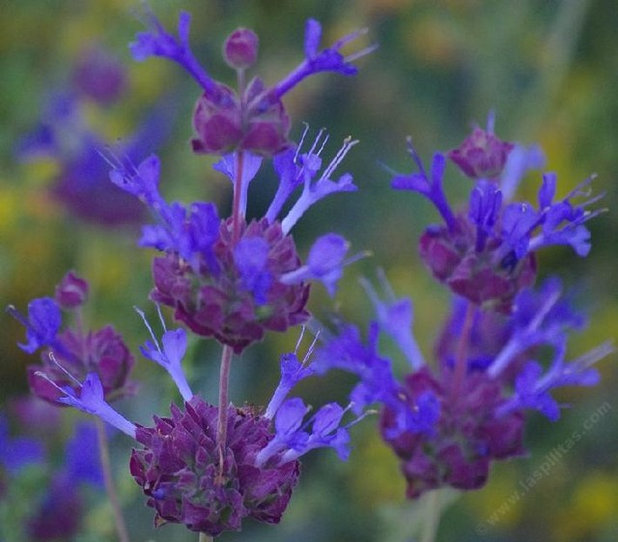
Las Pilitas Nursery
Purple Sage(
Salvia spp)
The
salvia genus offers a wide range of plants that feature those enviable purple fall blooms. This coloration makes it a perfect foil for more fall-hued plants, like rudbeckia
and Red Hot Poker. Because there are a wide range of salvias with varying heights and sun requirements, be sure to check with your local nursery to make the best choice for your garden. Great varieties to consider are
Salvia leucantha, Salvia farinacea and
Salvia guaranitica. USDA zones: 8 to 10; colder climates can use purple sage as an annual.
Water requirement: Average
Light requirement: Full sun to dappled shade
Mature size: 18 to 48 inches tall
Bloom time: Summer to fall
Planting tips: Plant in spring or fall and prune back after the first killing freeze.
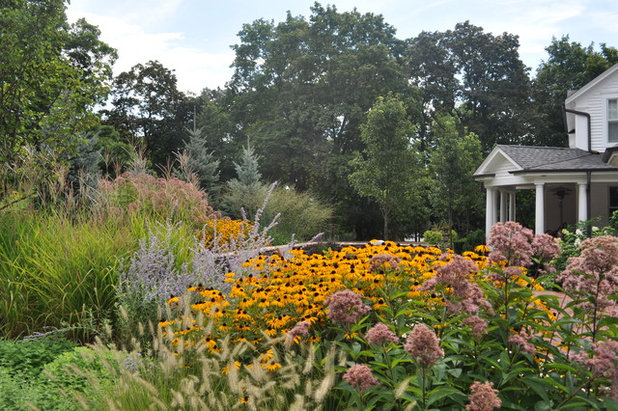
Milieu Design
Black-Eyed Susan(Rudbeckia hirta)This staple in the summer-to-fall garden features sunny daisy-like blooms with dark centers on top of tall, coarse stems. Although it's attractive to birds, bees and butterflies, all parts of this plant are poisonous, so be aware of this if you have small children or pets that frequent your garden. Black-eyed Susans pair beautifully with mums, ornamental grasses and Autumn Joy sedum.
USDA zones: 5a to 10a
Water requirement: Average to low
Light requirement: Full to partial sun
Mature size: 3 feet tall
Bloom time: Summer to fall
Planting tips: Plant in spring or fall and remove spent blooms. Prune after the first killing freeze and mulch during the winter.
How to grow Black-eyed Susan (
rudbeckia)
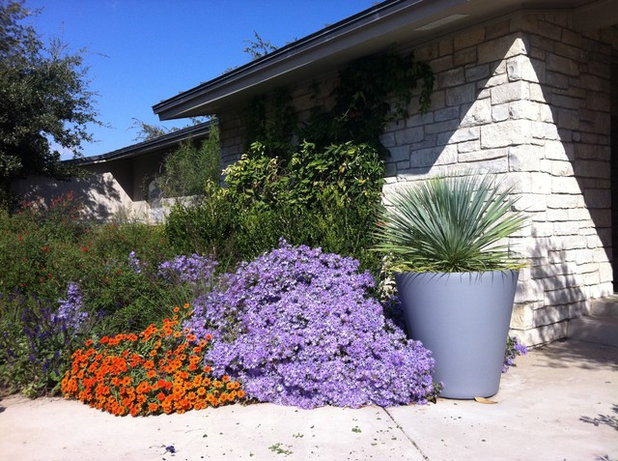
Melissa Gerstle Design
Fall Aster(Symphotrichum oblongifolium)Asters are time-honored plants in the fall garden, and with their profusion of purple daisy-like blooms, it’s easy to see why. They are deer resistant and are attractive to bees, butterflies and birds. They also are a great companion plant for ornamental grasses and other flowering perennials, such as rudbeckia.
USDA zones: 4a to 9b
Water requirement: Average
Light requirement: Full sun
Mature size: 2 to 3 feet tall
Bloom time: Late summer to fall
Planting tips: Plant in spring or fall, and pinch back growth regularly throughout the summer to encourage a tight-growing form.
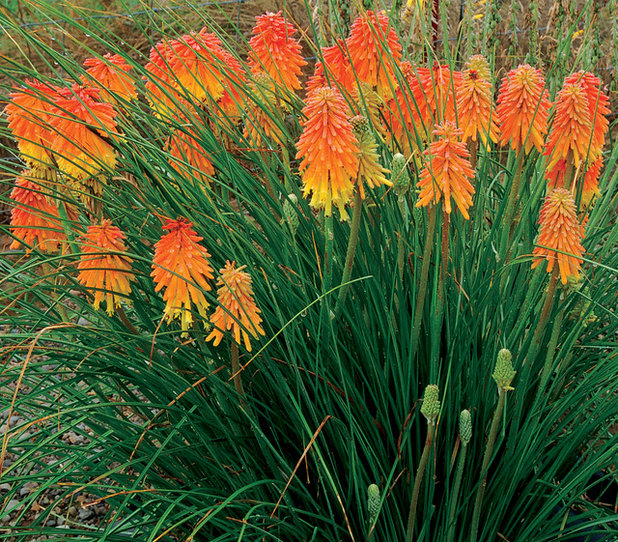
Terra Nova® Nurseries, Inc
Red Hot Poker(
Kniphofia spp)
This unusual plant features stunning red and yellow flower spikes atop slim green stems and leaves, creating a dramatic focal point in the fall perennial bed.
Red Hot Poker is also very deer resistant, while at the same time being attractive to bees, butterflies and birds. Pair it with the blue or purple tones of
Salvia leucantha or fall asters.
USDA zones: 6a to 10b
Water requirement: Low once established
Light requirement: Full sun
Mature size: 3 feet tall
Bloom time: Late summer to fall
Planting tips: Plant in spring or fall and prune back after the first killing freeze.
More About Growing Red Hot Poker
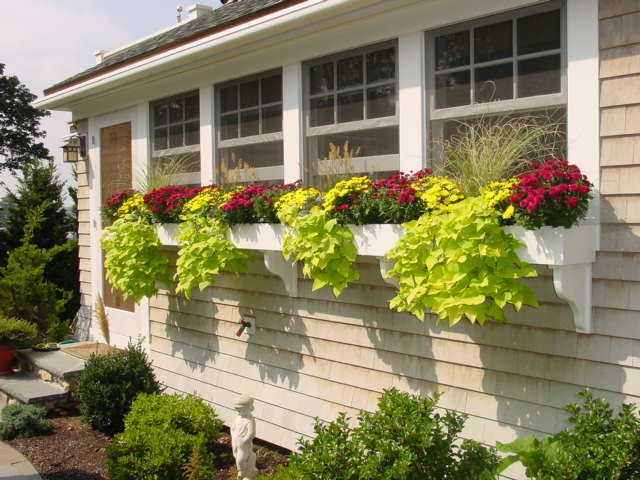
Michelle Jacoby, Changing Spaces
Chrysanthemum(
Chrysanthemum spp)
Nothing quite says “autumn” like mums, with their multipetaled flowers in shades of russet, cream, orange, yellow and pink. These mounding plants are perfect for edges of borders and beds as well as containers, and combine well with Black-eyed Susans, Mexican bush sage and fall asters.
USDA zones: 6 to 10
Water requirement: Average
Light requirement: Full sun
Mature size: 3 feet tall
Bloom time: Fall
Planting tips: Plant in the fall. Mulch lightly over the winter.
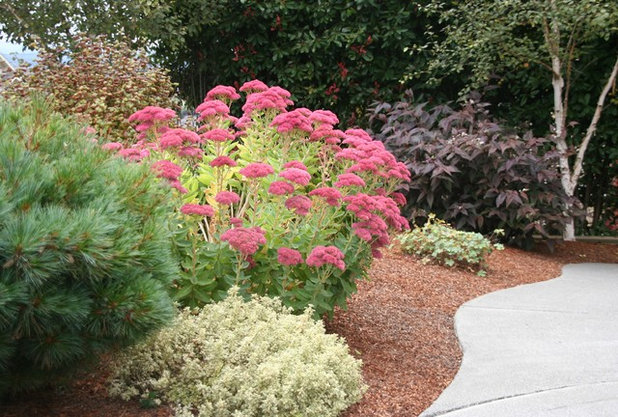
Genevieve Schmidt
Autumn Joy Sedum(Sedum 'Autumn Joy')Also called stonecrop, sedum comes from the succulent family of plants, so you already know it's low maintenance and drought tolerant. If you've never grown this plant before, you will be delighted with its fleshy leaves and broccoli-like blooms that start out green, changing to pink and finally bronze as they age. They will look spectacular when planted with other drought-tolerant plants, like succulents, ornamental grasses and flowering perennials.
USDA zones: 6 to 11
Water requirement: Low
Sun requirement: Full sun to partial shade
Mature size: 2 feet tall
Bloom time: Late summer to fall
Planting tips: Plant in spring or fall and remove flower stalks when they are done blooming. New growth resembling tiny cabbages will emerge in the spring.
More about growing sedum
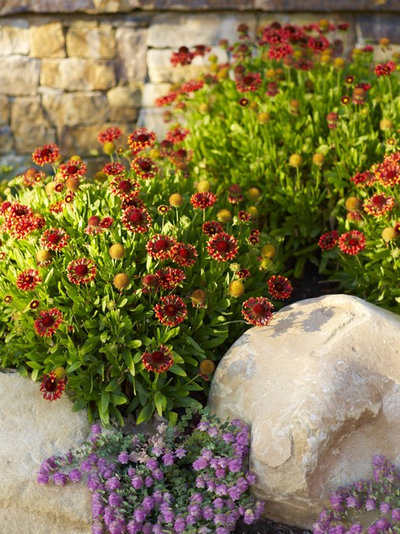
Jeffrey Gordon Smith Landscape Architecture
Blanket Flower(Gaillardia pulchella)Blanket flower is a reseeding annual that features trustworthy blooms in shades of red, yellow and orange, making it a perfect addition to your fall-hued garden. Great for meadows and wildflower gardens as well as for perennial beds and borders, blanket flower pairs beautifully with ornamental grasses as well as rudbeckia
and salvia
.USDA zones: As an annual, it will fare well in most all zones.
Water requirement: Average to low once established
Light requirement: Full to partial sun
Mature size: 18 to 36 inches tall
Bloom time: Summer to fall
Planting tips: Plant in spring or fall and let seeds fall to the ground when the plant is done blooming. Remove spent flower stalks after the first frost.
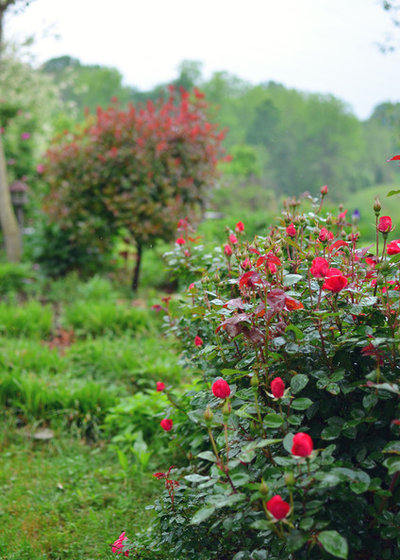
Amy Renea
Rose(
Rosa spp)
You only
thought roses were just a springtime feature in your garden, but if you care for them properly, some of the repeat bloomers will give you a dazzling fall display as well. Pair them with ornamental grasses and other flowering perennials, like Mexican bush sage
(Salvia leucantha).USDA zones: 2 to 10, depending upon variety
Water requirement: Average, but may need supplemental water during extreme heat
Light requirement: Full to partial sun
Mature size: 2 to 4 feet and taller, depending on variety
Bloom time: Spring, summer and fall intermittently
Planting tips: Plant in late winter or early spring, and prune hard around Valentine's Day. To promote more fall blooms, fertilize with a rose fertilizer in the first part of September and again in October, and give the bushes a light trim in late summer.





